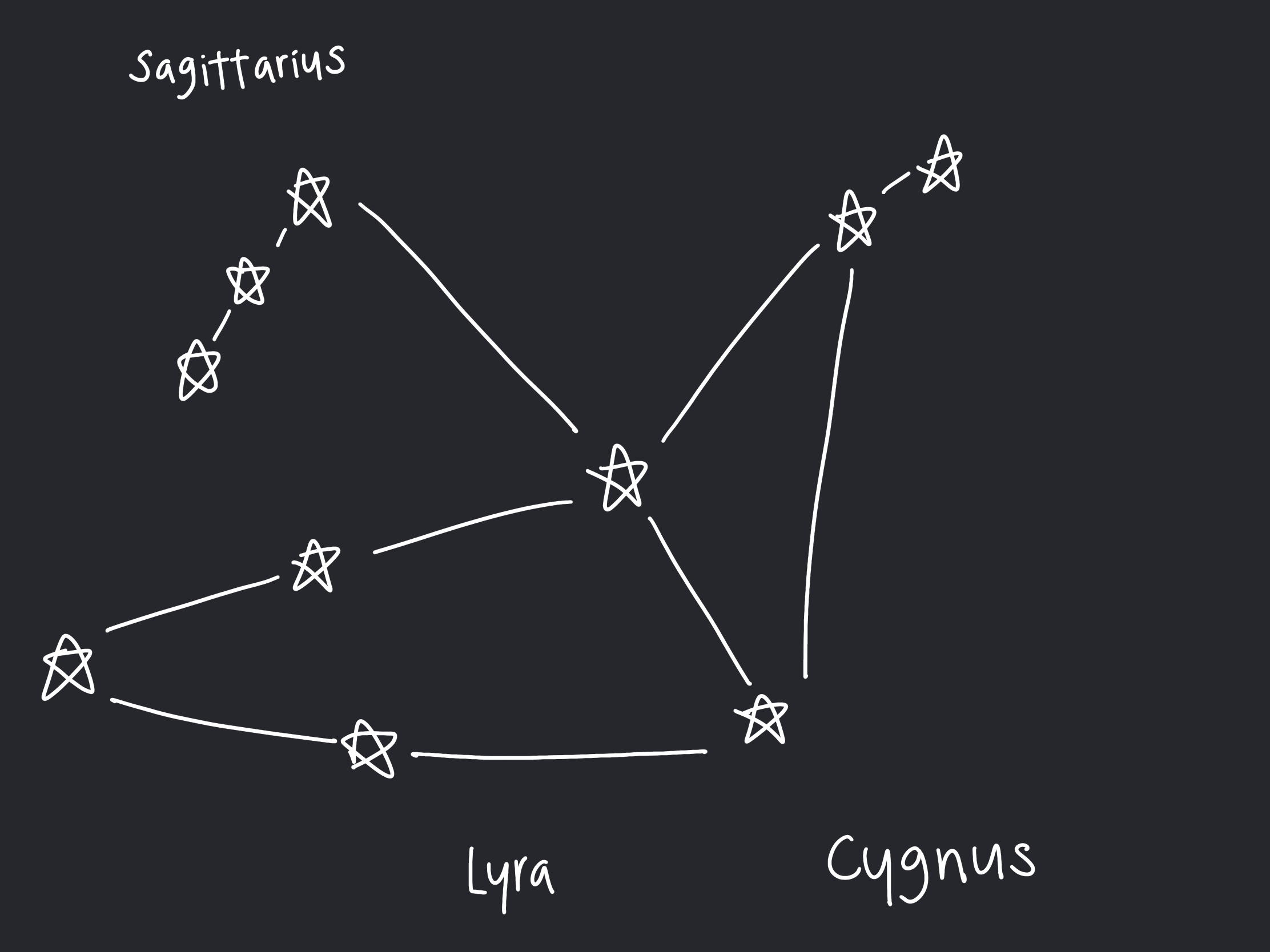Aquila is found on the celestial equator. Its brightest star, Altair, is one vertex of the Summer Triangle asterism. As it lies within the Milky Way, it contains many rich starfields (regions of stars in the sky) and has been the location of many novae. A nova is a transent astronomical event of a bright, new star that slowly fades over weeks or months.
Aquila can be located through the Summer Triangle asterism, which consists of Altair, Cygnus' Deneb, and Lyra's Vega. Aquila takes on the shape of a cross approximately.
This is a rough drawing of Aquila, with its neighbouring constellations.

Altair is the 12th brightest star in the night sky. Interestingly, Nova Aquilae was the brightest nova recorded in the telescope era, dwarfed in that moment only by Sirius and Canopus. Like all novae, it is a binary system comprising a white dwarf and donor low-mass star in close orbit. The white dwarf pulls matter off its companion, which would have filled the Roche lobe. The Roche lobe is a region in a binary star system where the orbiting matter within is gravitationally bound to the star. The matter collects on the dwarf star's accretion disk and is blown off in a nova. This material then forms an expanding shell which thins out and disappears.
Up next is Ara.